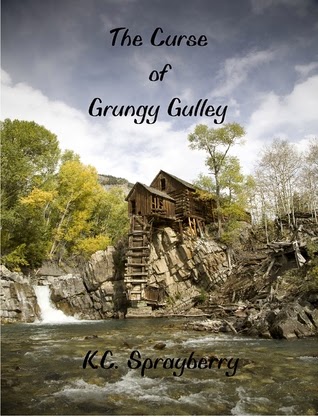It was
difficult to find a variety of teen books during my childhood in the 60s and
70s. There simply weren't many. I devoured the Hardy Boys and Nancy Drew
mysteries, lived vicariously through Trixie Belden's adventures, and once (for
about ten minutes) dreamed of being a nurse like Cherry Ames. After figuring
out I couldn't handle the sight of blood, I gave up that dream. Another author
I discovered was Judy Blume, and it was then I knew I'd address what had been
mostly ignored – issues teens face daily: the peer pressure, the temptations,
and mostly the problems people acknowledge when they're in the news, but
otherwise they ignore them.
Why concentrate a wonderful love
story on teen drinking as I did in Softly
Say Goodbye?
The
biggest reason is there are very few books available that focus on this story
from the perspective of a teen standing up for what she believes is right. Peer
pressure for teens is tremendous. Here they are, with all those raging
hormones, going through probably the most difficult school years as they learn
to be responsible for their assignments without being reminded every day, and
no one seems to address the problems teens face as they struggle to finish high
school and navigate the pitfalls of just being a teen.
How did I translate those issues
into a captivating story everyone who has read it says brings them to tears?
Not
easily. I played with the way the story evolves for almost four years from the
time the idea came to me. There wasn't one but five first drafts of this tale.
In each one, the characters pretty much remained the same, and the climax, the
defining moment for Erin, my protagonist, remained clear. The point of view,
however, changed with each evolution. It started out as third person, past
tense but that quickly hit the recycle bin as being far too dull. Third person,
present tense knocked at my mind, for about a week, when nothing sounded right.
Unwilling to touch what most people called preachy, I then tried first person,
past tense, but was bored to tears. This story had to jump off the page, grab
the reader's attention, and hold it. That left one other point of view – first
person, present tense.
My biggest
worry was telling the story. I set out researching information to help me with
my basic plot. Then I had to go through the whole thing word-by-word to keep
everything alive. Many times, I stopped at the pivotal moment, agonized over
it, sobbed when I realized there was no changing what would happen, and moved
on. Then the ending stumbled. Nothing worked. It all seemed preachy, dull, and
definitely not worthy of the story I'd written. I think the ending took the
longest to perfect, but then in an instant, there it was – screaming why didn't
you ever think of this before?
How did this story go from a
fantastic idea to a published book?
I
confess I couldn't have completed the journey this story started without the
fantastic people at Solstice Publishing. I tried the big name publishers, but I
always received the same response – nothing. No letter informing me the story
wasn't right for them. No quick email saying this wasn't what they were looking
for. Absolutely nothing. Then I took a chance, and sent this to a small
publisher I'd earmarked to try. They saw the same vision I did.
What's next on my agenda?
Hmmm?
Tough question. Those in my critique groups will tell you I have anywhere from
five to ten projects being juggled at the same time. I do. They know me very
well after many years together. Which one will be the next novel? It's hard to
tell. Up first is a book on school violence, but it's more about relationships
than the actual act of violence. Relationships with teens, their insecurities,
their secrets, their hopes and dreams, will always be in the forefront for me.
These lessons from my own teen years stick with me to this day.
Other
projects simmering or softly bubbling include one on texting and driving, a
teen voting for the first time, an abusive boyfriend with a Jekyll and Hyde
personality, and stalking. Those are at the top of the list. There are others,
but they're languishing in idea land, still waiting for the moment when the
characters burst forth and demand I tell their story.
My goal
with each new story is to keep in mind what Judy Blume did during my childhood
– take a subject not normally tackled and bring it out in a way readers will
love. I admire this woman for each and every book she wrote, with themes that
made the conservative parents of my teen years cringe. My thoughts on that
subject are "Good. Cringe. Read the book. Get involved in your teen's
life. Find out what matters to them." And if people talk about my book, if
teens see it's okay to stand up against peer pressure, more to the good.
Guest Blogger Bio
 Born and raised in Southern California’s Los Angeles basin,
K.C. Sprayberry spent years traveling the United States and Europe while in the
Air Force before settling in Northwest Georgia. A new empty nester with her
husband of more than twenty years, she spends her days figuring out new ways to
torment her characters and coming up with innovative tales from the South and
beyond.
Born and raised in Southern California’s Los Angeles basin,
K.C. Sprayberry spent years traveling the United States and Europe while in the
Air Force before settling in Northwest Georgia. A new empty nester with her
husband of more than twenty years, she spends her days figuring out new ways to
torment her characters and coming up with innovative tales from the South and
beyond.
She’s a multi-genre author who comes up with ideas from the
strangest sources. Some of her short stories have appeared in anthologies,
others in magazines. Three of her books (Softly Say Goodbye, Who Am I?, and
Mama’s Advice) are Amazon best sellers. Her other books are: Take Chances,
Where U @, The Wrong One, Pony Dreams, Evil Eyes, Inits, Canoples
Investigations Tackles Space Pirates, The Call Chronicles 1: The Griswold Gang,
and Starlight. Additionally, she has shorts available on Amazon: Grace, Secret
From the Flames, Family Curse … Times Two, and The Ghost Catcher.
Author Links:
Twitter:
https://twitter.com/kcsowriter
Website:
www.kcsprayberry.com
Pinterest:
http://pinterest.com/kcsprayberry/boards/
Authorgraph: http://www.authorgraph.com/authors/kcsowriter
Books:
























Thank you. This looks so good!
ReplyDeleteMy pleasure, K.C.!
Delete